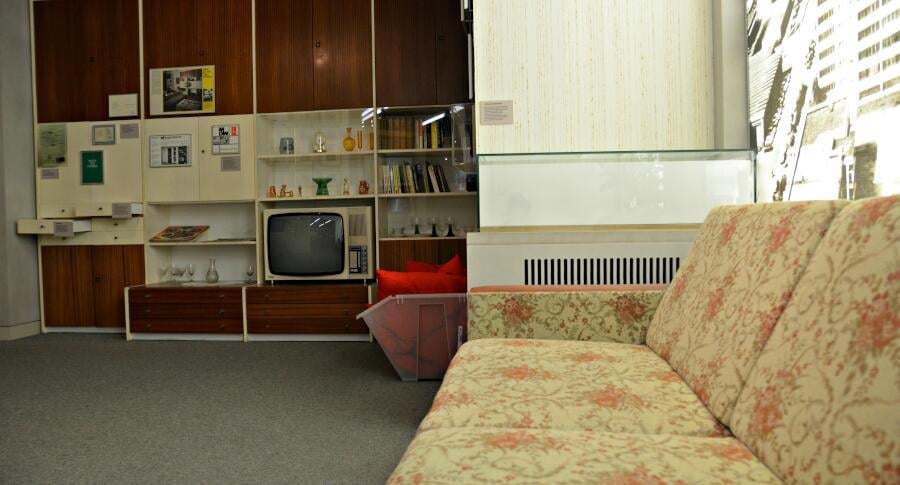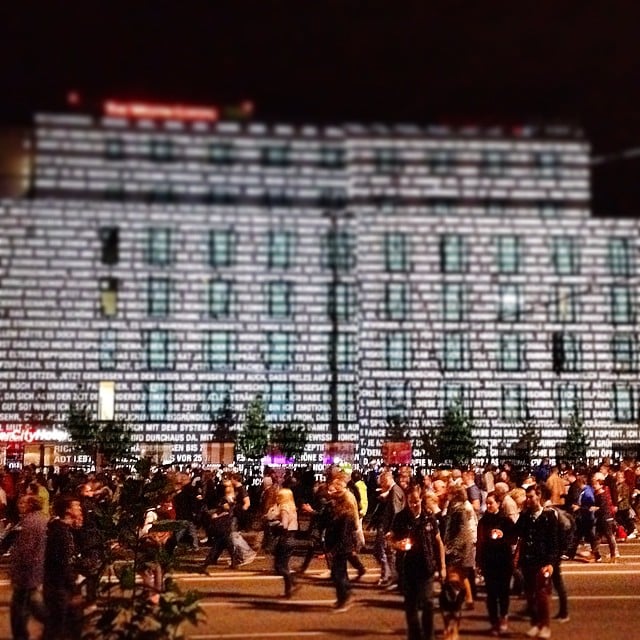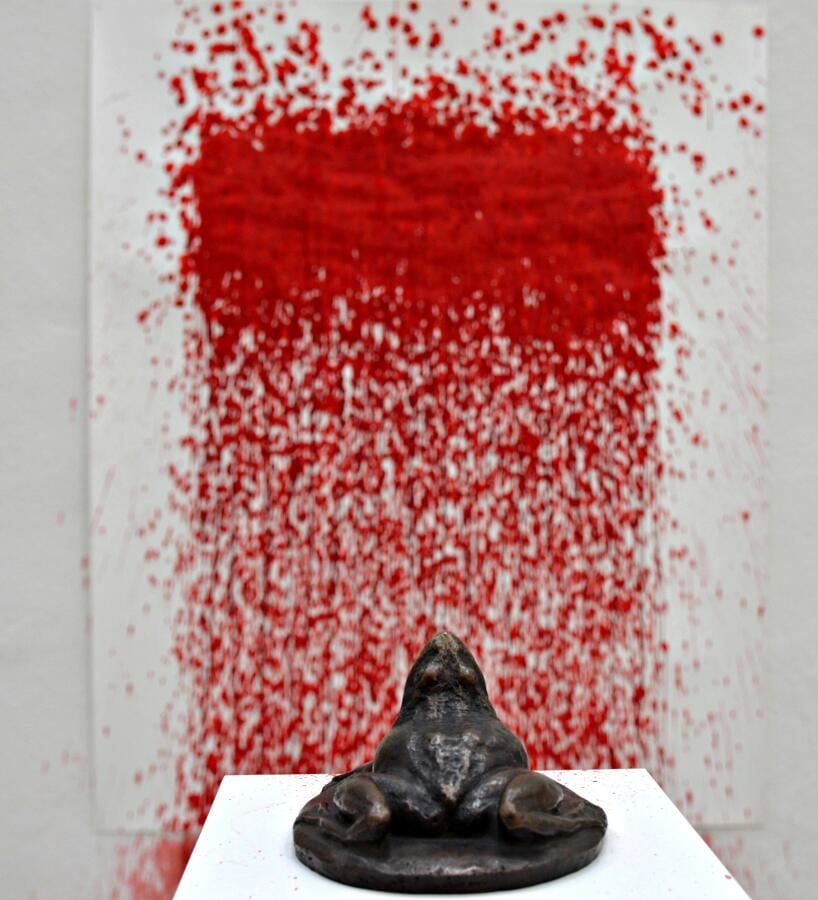Leipzig: A Must-Have Day Trip From Berlin, Germany
Munich, Berlin, Hamburg. These are the common cities I hear tourists discuss when planning a trip to Germany.
After a recent trip to Leipzig, I can’t believe this city isn’t on the list. Not only is it a short and straight trip from Berlin — not to mention cheaper than the capital — but it’s got palpable creative energy with lots of startups, designers and community members helping each other without motive.
Basically, it offers the perfect environment for a culture carnivore like me.
At times, I even got the sense I was in Paris, walking over cobbled streets amidst cyclists, cozy cafés and street accordion players.
I recently visited during a very special time: October 9, the 25th anniversary of the Peaceful Revolution, one of the most important events leading up to the fall of the Berlin Wall and the reunification of Germany.
This means that all over the city there are special exhibitions and events — not to mention a tangible sense of pride — for me to experience.
Leipzig Travel Tip:
Leipzig is less than 90 minutes by ICE (express) train from Berlin. For discount tickets, wait until about a week to three days before you’d like to go and check the Ltur.de website.
Here, you’ll find last minute discount tickets, often for about one third to one fourth the original price. Just make sure your times are flexible, just in case there are no tickets left for a particular train (although that’s rare).
For more on getting around the country, check out 17 Essential Germany Transportation Travel Tips. You can also find some information about general European transportation in my Europe travel guide.

1. An Interactive Historical Experience At The Forum of Contemporary History Leipzig
My whirlwind day in Leipzig begins with a guided tour of the Interactive Forum of Contemporary History, also known as Zeitgeschichtliches Forum Leipzig (Grimmaische Straße 6), with a docent named Sebastian.
What makes this museum so special is the permanent exhibit is put together in a way that makes you feel like you’re literally walking through history, beginning after WWII in Soviet-occupied Germany, the creation of the Berlin Wall and life in the German Democratic Republic (GDR).
Through original photos, video clips of real scenes from that time period, text, artifacts, and life-size re-creations of rooms and scenes (you’ll even walk from a refugee’s room and a GDR living room from the 1970s!) you’ll begin to get a sense of what actually went on during that time.
You’ll hear shocking stories about how people were closely monitored and controlled by the Stasi (German secret police), how the wall was policed and how people felt in the GDR.
According to my guide, 1,700 people died trying to cross the Berlin Wall into Western Democracy, and there are many personal stories — both sad and uplifting — that can help give you a way to connect and comprehend this dark and important part of German history.
Rotating exhibits also offer information and encourage a dialogue about other German culture topics.
2. From Cotton To Culture
In 1907, the 10 hectare plot near the Plagwitz S-Bann Station was a soon-to-be successful cotton mill.
While today Spinnerei (Spinnereistraße 7) is home to an arts complex with 14+ galleries, 120 artists, creative shops, design firms, and independent businesses, the rich history is still apparent through the red brick exterior, still-present train tracks used to ship the cotton and a small museum with original black and white photos and artifacts from the time.
During my time exploring the Spinnerei Galleries I saw a lot of thought-provoking, contemporary and avant-garde art.
For example, in Leipzig’s oldest gallery, Eigen + Art (open since 1983, when it was an underground gallery in the GRD), a frog sat on a pedestal, spewing fake red blood all over white walls to re-enact Gustave Flaubert’s The Legend of Saint Julien the Hospitalier, in a piece by Remy Markowitsch.
Another installation by Sadia Sadia called “Fugue (Die Wende)” is done in a video format and shows a person — an Everyman — blacking out sunlit window panes until there is nothing but darkness.
The piece was created by the artist to help her connect with her mother who risked her life three times to escape the GDR.
One of the most interesting but disturbing pieces was by a South Korean artist named Lee Yongbaek called “Last Message” that looks at society’s obsession with technology.
The installation shows a video recording taken during the sinking of a South Korean ferry in April 2014, complete with text messages sent to family members from a male teen passenger’s phone.
As there were no survivors, I’ll admit I felt kind of weird when I found out what I was watching wasn’t staged.
3. Coffee At Europe’s Second-Oldest Coffee Shop
Open since 1686, at Coffe Baum (Kleine Fleischergasse 4) one can sip coffees and teas and enjoy pastries and delicious German dishes in the open air.
One must-have is their “Leipziger Lerche,” a gooey flaky pastry with flavors of citrus and floral featuring crushed almonds, nuts, and a cherry. Interestingly, the treat pays homage to the lark bird, once an extremely popular dish in Leipzig, and the cherry symbolizes the lark’s heart.
Waitresses don historical costume with white aprons, blouses, maroon vests and skirts.
Fun fact:
The actual oldest cafe in Europe is Café Procope in Paris.
4. Explore Bach Heritage
If you’re a fan of classical music, Leipzig is a must. Even if you’re not — like me — it’s still interesting.
In front of the 800-year-old Late Gothic-style St. Thomas Church (Thomaskirchhof 18), where Bach once worked, you’ll find an enormous statue of the famous composer, created in 1908 by local sculptor Carl Seffner.
Inside the church you can hear the St. Thomas Boys Choir performing Bach cantatas, see a stained glass window dedicated to Bach and view a Bach-style pipe organ.
You’ll also find Bach’s tomb, right in the church sanctuary.
Across the street, the Bach Museum offers further exploration, full of Bach manuscripts, original music, video clips, and Bach-related events. I definitely left feeling inspired, despite the fact I don’t have musical talents.
Leipzig Music Bonus Tip:
Leipzig is home to the Leipzig Music Trail, a 5.1-kilometer (3.2-mile) stroll featuring relevant sites and experiences in the city center.

5. Check The Calendar For A Festival
Leipzig is known for its arts-, music- and culture-focused fairs and festivals, so it won’t be hard to book for a weekend where something is going on.
When I was there I had the opportunity to attend the Festival of Lights, an annual event celebrating the anniversary of the Peaceful Revolution, peaceful protesting in 1989 that helped lead to the falling of the Berlin Wall, a true democracy for Germany, and the reunification of the country.
Other great festivals to add to your calendar include Bachfest (Bach is buried in the local St. Thomas Church, complete with a stained glass window and pipe organ in his honor); the Leipzig Festival Autumn, which offers an array of arts workshops, exhibits and programming; and the Classic Open, which transforms Market Square into an open air concert venue each August.

6. Have An Adventure
I’ll admit I did not do this one, as I lost time attending the Festival of Lights, which was my main priority; however, next time I’m in Leipzig this is going to be the top thing on my to-do list. It’s one of the most adventurous things to do in Germany.
After the Berlin Wall fell down, GDR citizens fled quickly to the West, creating a huge population shift and leaving many buildings empty.
In order to make use of the unused GDR structures, they were re-purposed into climbing towers called K4, run by the German Alpine Association. The experience features 30+ routes of varying difficulty.
Most East Germans don’t look back at life in the General Democratic Republic with pleasure, so the city turned old and unwanted GDR towers — called Cliff K4 — into mountaineering stations for climbers.
To do this, you’ll need to walk 7 kilometers (4.3 miles) to Angerstrasse 53. Admission is 5 Euros ($.632 USD) per day.

Extend Your Stay In Leipzig
This is just a small preview of things to do based on my day spent in Leipzig. In reality, the city is chock full of things to do and well worth at least a long weekend to explore the canals, museums, art galleries, and gastronomic offerings.
Moreover, the entire city is bikeable from one point to another in 40 minutes or less, so it’s easy to navigate Leipzig and travel on a budget.
In terms of accommodation, I stayed at the Days Inn Leipzig City Centre, a perfectly fine no-frills accommodation with free breakfast and strong wifi.
If I went back I would likely book Say Cheese Leipzig, which is inexpensive, has excellent reviews, and offers both private rooms and shared dorms. Also, their tagline, “hotels & hostels for smiling people,” makes me giggle every time I read it.
Rates start at about 15 Euros/$19 USD per night for an 8-person dorm + optional 5 Euros/$6.30 USD per day for breakfast.





Hi, I’m Jessie on a journey!
I'm a conscious solo traveler on a mission to take you beyond the guidebook to inspire you to live your best life through travel. Come join me!
Want to live your best life through travel?
Subscribe for FREE access to my library of fun blogging worksheets and learn how to get paid to travel more!
Turn Your Travel Blog Into A Profitable Business
Subscribe to my email list to snag instant access to my library of workbooks, checklists, tutorials and other resources to help you earn more money -- and have more fun -- blogging. Oh, and it's totally FREE! :) // Privacy Policy.